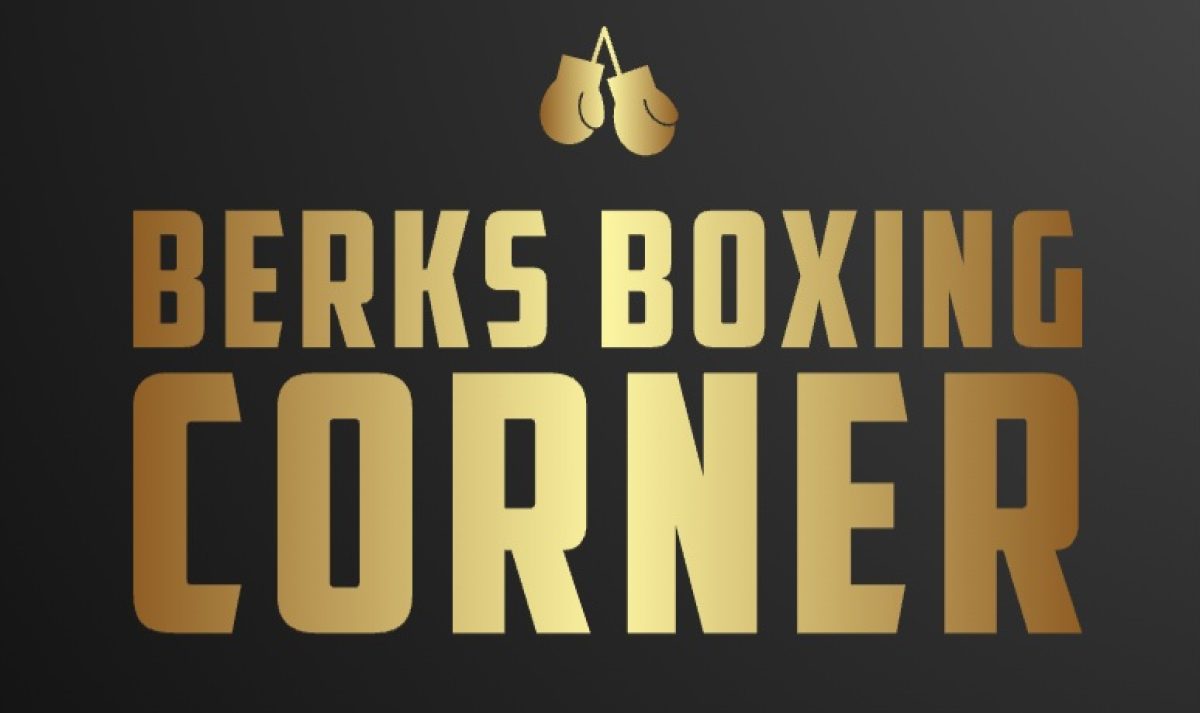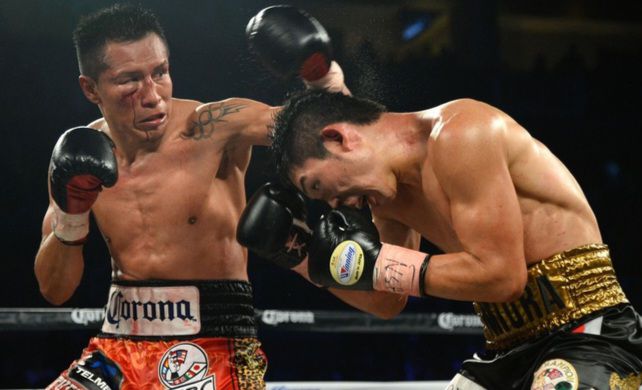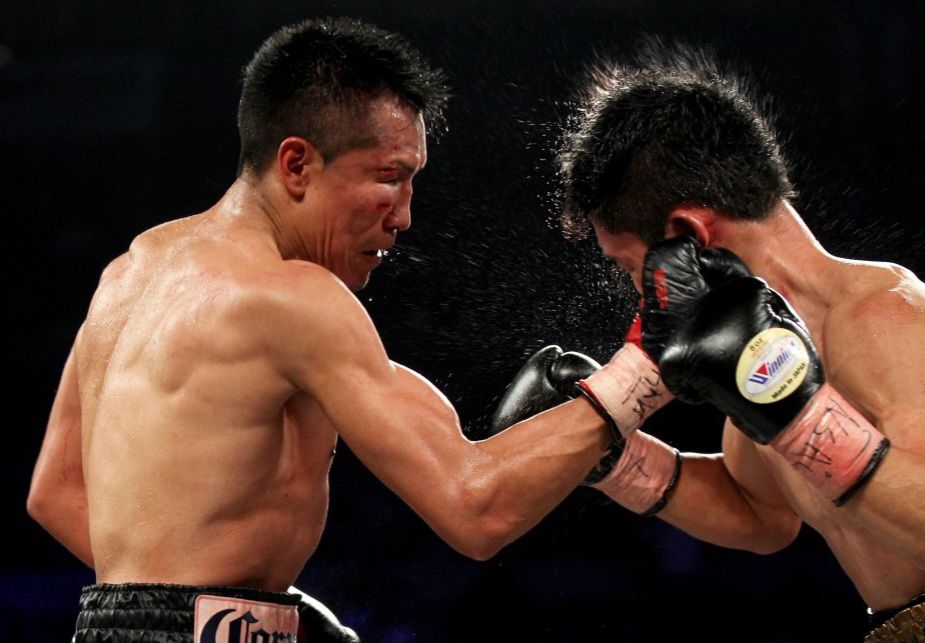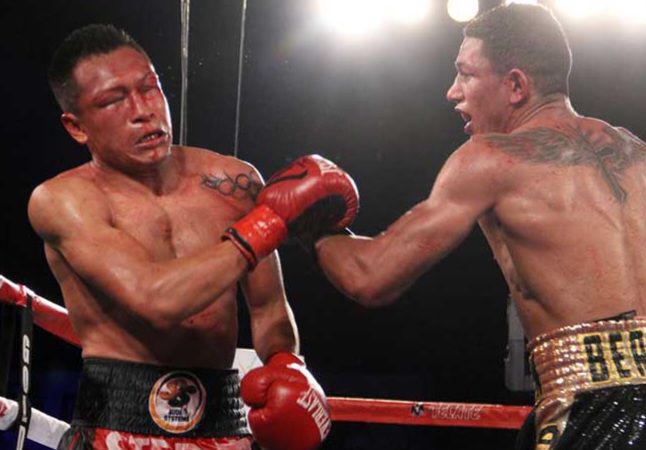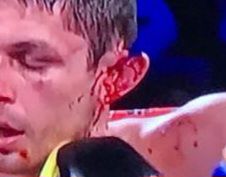
It all began with a misspelt name.
Born on 15 September 1981, in Mexico City, but raised in Pachuca, Mexico, baby “Johnny” was registered Jhonny at birth. It may have been a spelling mistake, but it certainly added a uniqueness to one of the most exciting fighters of the last 20 years.
Being surrounded by a family of boxers meant there was an almost inevitability that the young Gonzàlez would soon be donning the gloves. His moment arrived when he came home from school one day, bleeding from the nose after an altercation with another boy. His father decided that he needed to learn how to defend himself. He was nine years old.
Gonzàlez loved the feeling of fighting, but his father urged him to concentrate on school and his education. He had his first amateur fight at ten and went on to have nearly 180 bouts. But he treated it more like a hobby than sport. That would change when he decided that he wanted to turn professional.
The realisation of how hard this would be came within his first two fights. He made his debut almost a month before his 18th birthday on 14 August 1999, losing a four round decision. He suffered the same fate in his next fight, too, before it was third time lucky, outpointing one Mario Rodriguez over four.
A run of a further twelve wins, including whizzing through six rounders to ten, also established what would become Gonzàlez trademark; he could punch, as evidenced with eleven of those wins coming via the short route.
This would lead to his first title, the NABF bantamweight, when he stopped Ablorh Sowah in the tenth, on 26 October 2001. But he was brought back down to earth against his next opponent, Ricardo Vargas.
Vargas (31-9-3, with 11 KO’s) was a seasoned pro and former world title challenger. That experience would prove vital as Gonzàlez lost a close, but unanimous decision. Undeterred, Gonzàlez put his NABF title on the line in a rematch. But with both men cut, the fight went to the scorecards after seven rounds. Vargas was awarded a unanimous technical decision, and the NABF title.
Just three months later, Gonzàlez was back in the ring and starting yet another kayo streak. Two wins took him to a WBC Continental Americas bantamweight shot, where he knocked out Francisco Mateos in the opening round.
After a keep busy first round win, he became national champion, stopping Ramon Leyte in four. He defended that with a first round KO of Jorge Alberto Reyes, then stopped Moises Zamudio in five whilst defending his Continental Americas trinket. He then ripped away the unbeaten record of Roger Gonzalez in six.
Another regional title was added when he stopped Alejandro Montiel in six for the vacant WBO NABO title, before two further stoppages set up a defence of both belts against the unbeaten Gabriel Elizondo.
This fight would be the precursor of Gonzàlez’ career. Elizondo was 17-0, with 8 KO’s, and a decided underdog. But in their meeting on 18 November 2004, he made it perfectly clear that he wanted Gonzàlez’ gold.
Gonzàlez was in control, hooking up and down as he moved in and out of range. That was until with just over a minute left in the opening round, Elizondo beat him to the punch with a right hand that sent Gonzàlez onto his hands and knees. He dragged himself up but his legs were unsteady as Elizondo launched right hands like they were going out of fashion. The bell sounded, giving Gonzàlez the recovery time he needed.
Coming out for round two, Gonzàlez took ring centre. With just over half the round gone, a left uppercut folded Elizondo’s legs as he hit the canvas. He bravely got up, but the fight was as good as over, and he was hammered to the canvas a further three times. In under six minutes, Gonzàlez defined his future: a big puncher who could also be hurt. Never a more exciting combination.
He was taken the distance in his next fight, outpointing Adonis Rivas over twelve, thus ending a twelve fight knockout streak, then scored a stoppage before hearing the final bell for the second time in three fights, when he outpointed Adolfo Landerós after ten.
He then found himself in another shootout, this time with namesake William Gonzalez who was 16-1, with 15 KO’s.
On 1 September 2005, the pair put on a blistering show. Gonzàlez dropped the challenger for his NABO title, in the first, before WG had a point deducted for hitting him after he had slipped to the canvas in round two. The third electrified the crowd when Gonzàlez dropped WG again. But WG got up and dropped Gonzàlez as the pendulum swung back and forth. Gonzàlez got up with renewed determination and iced his man with a big right. It was a brutal end.
Gonzàlez was now 30-4, with 26 inside the distance. He had won and defended several regional belts but was now ready to achieve his goal. He wanted the world title.
Champion
Thailand’s Ratanachai Sor Vorapin was the first fighter from his country to hold a title from the World Boxing Organisation (WBO). He had twice challenged for world honours but had come up short. That was until he outpointed Cruz Carbajal to relieve him of the WBO bantamweight title. With a record of 65-8 wth 42 KO’s, Vorapin was vastly experienced. Gonzàlez would be his second defence.
On 29 October, just under two months from his last win, Gonzàlez entered the Desert Diamond Casino, Tucson, knowing that he would have to adjust his approach with the southpaw veteran.
He started cautiously, keeping the champion on the end of his jab, hooking off of it whenever he moved in close. But it wasn’t until the third that he flashed his power, a left uppercut sending Vorapin to the canvas with just under half a minute left. He got up but was clearly stunned, and he was sent straight back down after a flurry. He was up before the bell, but Gonzàlez had made a big statement.
Gonzàlez hurt him again early in the fourth. He piled on the pressure as Vorapin called on all of his experience to weather the storm. As Gonzàlez appeared to punch himself out a little, Vorapin survived the round. But the effect of the challengers punches left Vorapin with a bad cut above his right eye and bruising around both.
It didn’t deter the champion though, as he stormed out in the fifth, taking the fight to the now, slightly ragged looking Gonzàlez, even briefly troubling him with a straight left. However, as the round neared its end, Gonzàlez was back on the attack, driving Vorapin back to the ropes.
Both were feeling the pace in round six as several exchanges became a little scrappy. There was a respite when Gonzàlez was fouled by an unintentional low blow. After a brief rest, the pair resumed their exchanges. But Gonzàlez power was always going to make the difference and a big left hook sent Vorapin down a split second before the bell. To his credit he got back up, but he was starting to look a mess.
Gonzàlez smelt blood at the start of the seventh, and he pounced like a predator, devouring its wounded prey. Both hands went like pistons as he drove Vorapin into the ropes, defenceless. The referee dived in to save him. Gonzàlez was the new world champion.
He was to have made his first defence against one of the best fighters in the lower weights, Mark Johnson. Although Johnson (44-4, with 28 KO’s), was a former two-weight champion, and had seen better days, his name and reputation still carried a hefty amount of respect. But Johnson, having not fought in nearly 18 months, failed to make the bantamweight limit, so the fight went ahead as a non-title.
The Mandalay Bay Resort & Casino, Las Vegas, hosted their meeting on 25 February 2006. After a slow three rounds, Gonzàlez started moving through the gears, dropping Johnson with a left hook in round four. It elicited a response from Johnson as the pair traded throughout the rest of the round.
The next couple of rounds were fought at a decent pace, although the youth of Gonzàlez was proving more decisive. Gonzàlez finally put the punctuation mark on the fight, and Johnson’s career, when a flurry, topped off naturally with a left hook, sent the former champion onto his knee’s for the referee’s count of ten in the eighth.
So it meant his first official defence would come against former super flyweight champion Fernando Montiel. And it wasn’t a particularly convincing one either. Amid rumours of trouble at the weight, Gonzàlez struggled to pin down the speedy Montiel. After twelve rounds, he took a split-decision that could have easily gone the other way.
He stepped up a division to challenge countryman Israel Vazquez for the WBC super bantamweight title. Vazquez (40-3, 29 KO’s). Vazquez was a heavy-handed, aggressive fighter. Going toe to toe with him would be a very risky strategy.
So Close
They met at the MGM Grand, Las Vegas, on 16 September 2006. Aware of the danger, Gonzàlez turned in a tactical performance, keeping Vazquez on the end of his longer reach. After sweeping the first three, Gonzàlez sent Vazquez to the canvas with a left hook. It was a flash knockdown, but it made a statement.
Gonzàlez repeated the trick in round seven, with this hook having more effect. Vazquez was getting beat up, with blood running down his right cheek from a cut over his eye. But his punches were having an effect, with blood flowing from Gonzàlez nose.
Gonzàlez was bossing round seven when the champion connected with a powerful right hand, sending him down. Gonzàlez was in trouble as he tried to regain the strength in his legs. He survived the round, but he had now felt Vazquez power and the damage it could inflict.
He got back in control in round eight but was looking visibly fatigued throughout the ninth as he was tagged repeatedly. In the tenth, he came apart. He boxed well for the first two minutes but was stunned by a short hook. Several more shots landed before he went down for a second time. As he listened to the referee’s count, he looked in trouble. His corner threw the towel in. Vazquez had retained.
Gonzàlez returned to bantamweight, successfully defending his title against former IBF flyweight champion Irene Pacheco, with a ninth round stoppage.
But the battle with the scales was about to cost him his title. He had to lose twelve pounds to make the 118lbs limit for his next defence against Filipino challenger Gerry Penalosa.
Penalosa (51-6-2, with 32 KO’s) was a former WBC super flyweight champion, and in his last fight, took champion Daniel Ponce De Leon the distance up at super bantamweight. Beforehand, he said he would be much stronger at bantam. Gonzàlez let it be known that this would be his last fight in this division.
Gonzàlez kept things long as he tried to break down the southpaw challenger. The tactics gave him a lead after six. But all it took was one punch to separate him from his title. With thirty seconds left in round seven, one well placed left hander to Gonzàlez liver caused him to crumble. The pain etched on his face clearly indicated he wouldn’t beat the count. His title was gone.
Super Bantamweight
Gonzàlez returned three months later with a points win over ten. He then ran off five straight inside the distance wins to earn himself another shot at the WBC title, this time held by Japan’s Toshiaki Nishioka.
Nishioka (33-4-3, with 20 KO’s) had won the interim title before being upgraded to full champion. Gonzàlez would be his second defence.
It started well for the challenger when he dropped the southpaw champion with a straight right in the first. After outboxing Nishioka in round two, disaster struck. With a minute gone, Gonzàlez was nailed with a straight left bang on the chin. He fell flat like an ironing board. As the referee counted, instinct alone caused him to rise, but he was in no fit condition to defend himself.
In the aftermath, Gonzàlez felt it was time for a change. He had always been trained by his father but felt he needed someone with a bit more experience. He hired legendary trainer Ignacio “Nacho” Beristàin. He also decided to move up to featherweight, a move that would benefit his physique.
Featherweight
Gonzàlez started his comeback four months later, knocking out Jose Francisco Mendoza in the opening round. Having clearly brought his power up to the 126lb division with him, he went on a run of a further six knockouts, all inside six rounds, whilst collecting the WBC Fecarbox and IBO trinkets, and winning two WBC eliminators to earn him his chance at the champion, Japan’s Hozumi Hasegawa.
Hasegawa (29-3, with 12 KO’s) was a former WBC champion at bantamweight. Following success there, he stepped up to outpoint Juan Carlos Burgos for the vacant title. Gonzàlez would be his first defence.
Travelling to the World Memorial Hall, Kobe, Japan, on 8 April 2011, Gonzàlez demonstrated how effective he was at the higher weight. Controlling the first two rounds, he frequently connected with his left hook over the southpaw champions right. Hasegawa had a solid third, but Gonzàlez flashed his power in the fourth when a right hand drilled Hasegawa to the canvas. Dazed, he pulled himself up, but the referee had seen enough. Gonzàlez was back on top.
He started to rack up the defences. Tomas Villa was stopped in four, Rogers Mtagwa was halted in two, Roinet Caballero was knocked out in two, and Elio Rojas survived a tenth round knockdown but lost a unanimous decision.
His next defence saw him go up against two-division champion Daniel Ponce De Leon. De Leon had fought some of the best around the division and was known as a stiff puncher. He was Gonzàlez toughest defence on paper.
But their fight on 15 September 2012 at the MGM Grand failed to catch fire. After two cautious rounds, the southpaw challenger suffered a cut over his right eye. The pair continued in a ragged display that saw both men miss more than they landed.
Round five was better, with both men finding the target more regularly. This continued through the sixth, until a barrage sent Gonzàlez through the ropes, with the referee ruling a knockdown. In a close contest, it would prove a crucial call.
The knockdown fired up Ponce De Leon, as he drove Gonzàlez back throughout the seventh as the champion started to tire. Then, with half a minute remaining in round eight, an accidental clash of heads opened a cut above Gonzàlez right eye. After an inspection by the ringside doctor, he was ruled unable to continue. The fight would go to the judges scorecards. A unanimous technical decision was awarded, along with Gonzàlez WBC title, to Ponce De Leon. Gonzàlez was an ex-champion once again.
He returned five months later, scoring two wins, to set up a shot at the new WBC champion Abner Mares.
Mares was unbeaten at 26-0-1, with 13 KO’s, and had dropped Ponce De Leon twice on his way to winning the title with a ninth round stoppage. Highly rated, he was being promoted as a future star of the sport. Gonzàlez was his maiden defence.
Champion Against The Odds
The advantage of possessing knockout power is that at any given point, you can not only turn a fight in your favour, but you can also bring matters to an abrupt conclusion. On the night of 24 August 2013, at the StubHub Center in Carson, Mares became a victim of this brutal truth.
For the opening two minutes, Mares displayed quick hands against the slower challenger. But with under 40 seconds left on the clock, Gonzàlez reminded everyone why he could never be written off when he detonated his famed left hook onto the chin of Mares. Mares was sent flat onto his back as the crowd roared in astonishment at what had suddenly happened. Instinct caused him to rise, but Gonzàlez knew he had him. He unloaded until Mares went down for a second time. It was over. Gonzàlez was back as champion.
He made the first defence of his second reign scoring a tenth round technical decision over Clive Atwell, then sent compatriot, four-division veteran Jorge Arce into retirement, scoring three knockdowns on his way to an eleventh round stoppage.
Next up was one of the hottest propects in boxing, Gary Russell Jr. A decorated amateur, the smooth southpaw had lost only once in his 25-1, 14 KO’s record, and that was on points to the extremely talented Vasiliy Lomachenko in a tilt at the vacant WBO crown. Not only was he fresher than Gonzàlez, he also had a seven year age advantage. Both would prove too much for Gonzàlez to overcome.
Pearl Concert Theater in Nevada hosted their meeting on 28 March 2015. Gonzàlez was a step behind from the off, as Russell peppered him with crisp straight lefts down the pipe. After dropping the first two rounds, Gonzàlez was caught flush at the end of the third when a straight left right hook combo sent him down. He was hurt but beat the count.
But the writing was already on the wall. Russell went for the finish, sending Gonzàlez to the mat twice, with the referee rescuing the beaten Mexican. His title was gone for good.
However, even though the world championship days were over, that still didn’t deter the now nearly thirty four year old from pushing on.
From 2015 until 2022, Gonzàlez fought sixteen times, losing just three and drawing one, with eight inside schedule. Whilst the opposition wasn’t top level, he still had enough experience to see his way through, winning the minor WBC International Silver and WBC Latino trinkets at super featherweight. Finally, after drawing and then losing his last two fights, the now forty one year old walked off into the sunset. His final record: 69-12-1, with 56 KO’s.
Gonzàlez father always claimed that his son’s name was never misspelt. He said it was spelt that way because he knew his son was special. When Jhonny Gonzàlez sits back and reflects on his achievements, he may well concede that his father was right all along.

Dean Berks
Previous articles can be found on http://www.bluecornerboxing@wordpress.com
